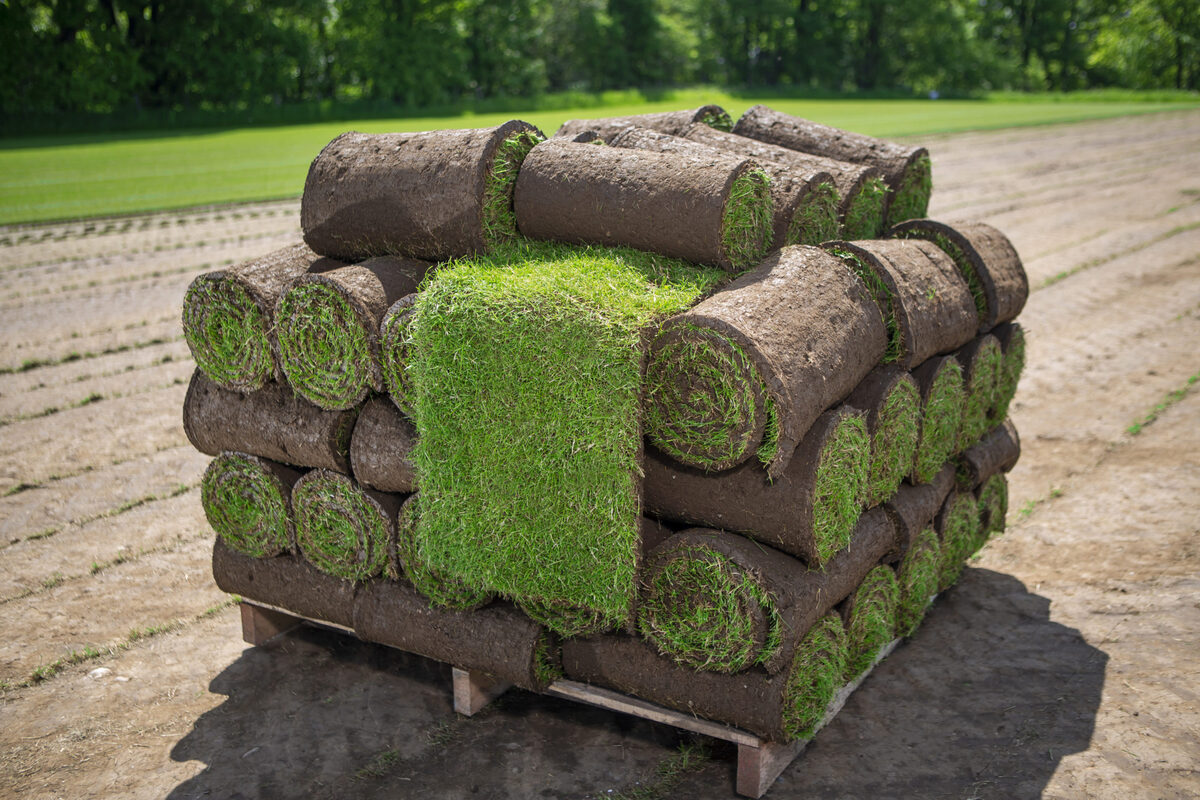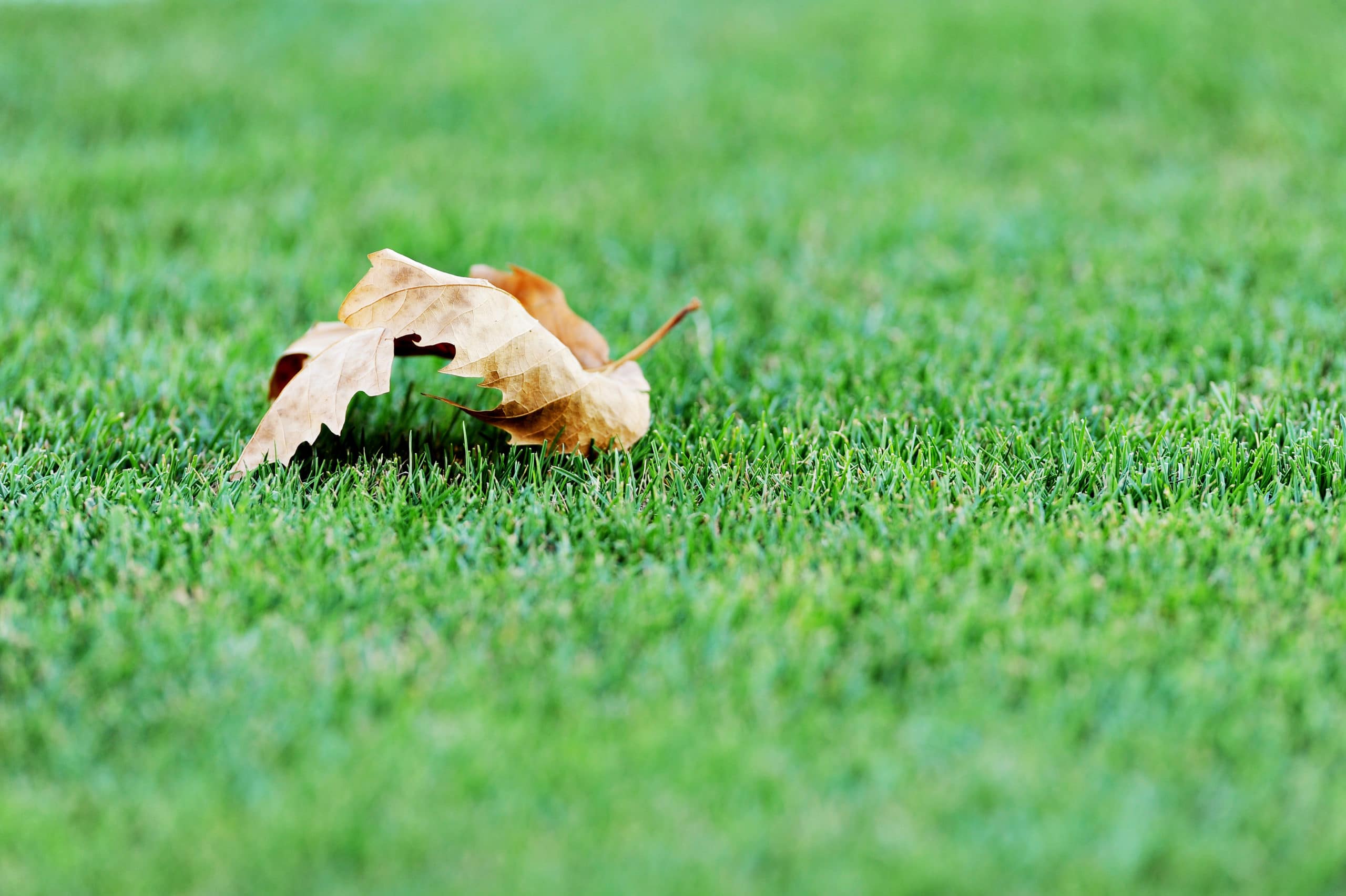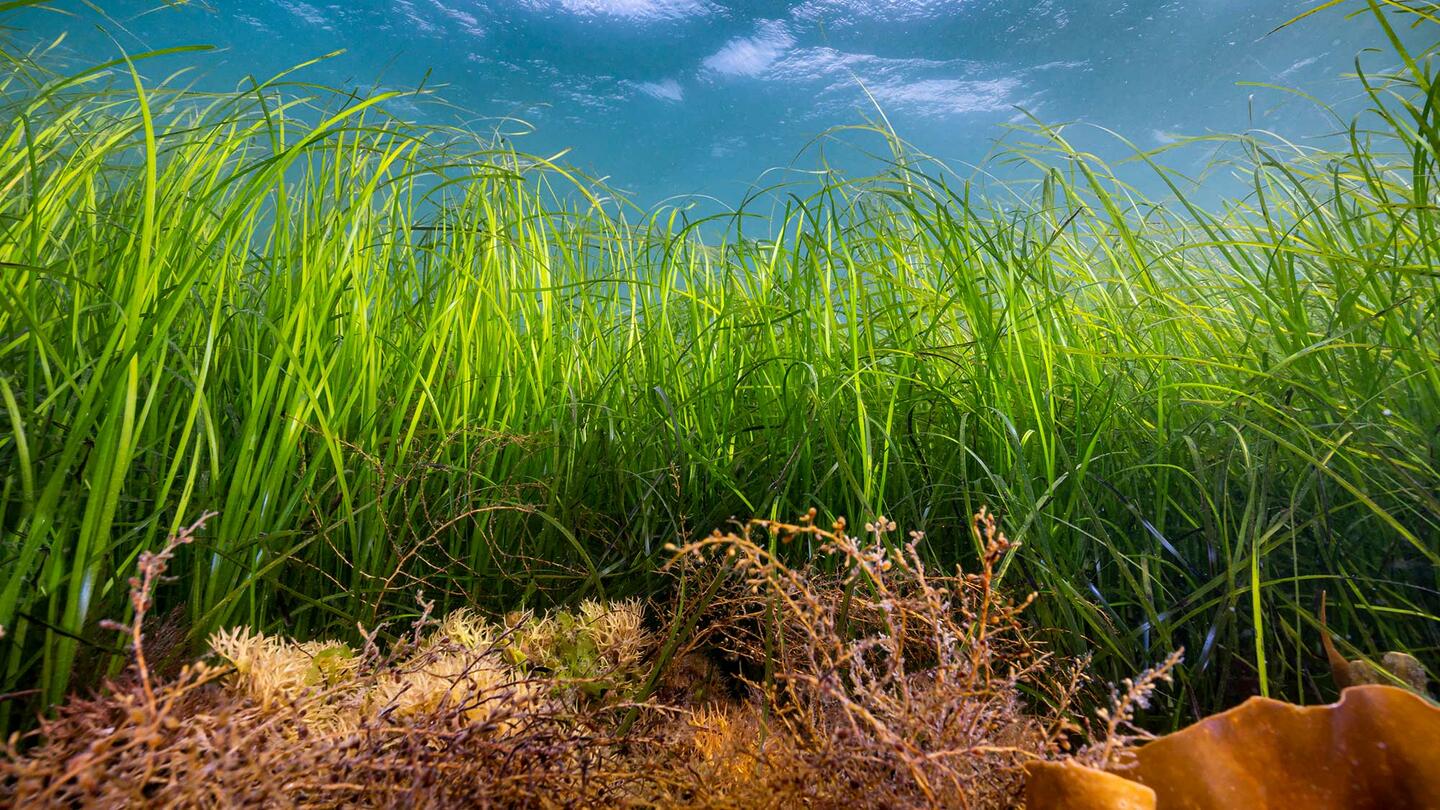Home>Gardening & Outdoor>Landscaping Ideas>How To Get The Greenest Grass


Landscaping Ideas
How To Get The Greenest Grass
Modified: March 29, 2024
Achieve the greenest grass with expert landscaping ideas. Learn how to enhance your lawn's beauty and health for a stunning outdoor space. Discover effective tips and techniques!
(Many of the links in this article redirect to a specific reviewed product. Your purchase of these products through affiliate links helps to generate commission for Storables.com, at no extra cost. Learn more)
**
Introduction
**
Are you dreaming of a lush, vibrant lawn that beckons bare feet and outdoor gatherings? Achieving the greenest grass on the block is a goal that many homeowners aspire to, and with the right knowledge and care, it's absolutely attainable. In this comprehensive guide, we'll explore the essential steps to transform your lawn into a verdant oasis that will be the envy of the neighborhood.
A beautiful lawn not only enhances the aesthetics of your home but also provides a welcoming outdoor space for relaxation and recreation. However, achieving a lawn that is the epitome of green perfection requires a combination of understanding your soil, selecting the right grass seed, implementing proper watering and fertilizing techniques, controlling weeds and pests, and mastering the art of mowing and maintenance. Each of these elements plays a crucial role in nurturing a healthy and vibrant lawn that you can be proud of.
Whether you're a seasoned lawn care enthusiast or a novice homeowner looking to elevate your landscaping game, this guide is designed to provide you with the knowledge and insights necessary to achieve the greenest grass possible. So, roll up your sleeves, put on your gardening gloves, and let's embark on this journey to transform your lawn into a luxurious carpet of greenery that will leave everyone green with envy.
Key Takeaways:
- 1. Understanding your soil is crucial for a vibrant lawn. Test your soil, adjust pH levels, and improve drainage to create an optimal environment for healthy, green grass.
- 2. Choose the right grass seed based on climate, sunlight, and maintenance preferences. This sets the foundation for a resilient, lush lawn that suits your specific needs and enhances your outdoor space.
Read more: How To Get Grass To Spread
Understanding Your Soil
Before diving into the exciting world of grass seeds and watering techniques, it’s essential to start at the very foundation of a healthy lawn: the soil. Understanding your soil is the first step in creating an optimal environment for lush, green grass to thrive.
Soil composition varies from region to region, and even from yard to yard. Conducting a simple soil test can provide valuable insights into its pH levels, nutrient content, and overall composition. You can either opt for DIY soil testing kits available at garden centers or seek professional assistance to ensure accuracy.
Once you have a clear understanding of your soil’s characteristics, you can take steps to amend it accordingly. For instance, if the soil is too acidic, you can add lime to raise the pH level and create a more hospitable environment for grass growth. On the other hand, if the soil is lacking essential nutrients, incorporating organic matter or specialized fertilizers can help enrich the soil and provide a solid foundation for your grass to flourish.
Furthermore, understanding the soil’s drainage properties is crucial. Poor drainage can lead to waterlogged areas that suffocate grass roots, while excessively fast drainage may result in dry, barren patches. By addressing drainage issues and amending the soil as needed, you can create an optimal growing environment for your grass.
By taking the time to understand your soil and make necessary adjustments, you’re setting the stage for a thriving lawn that’s capable of achieving the vibrant green hue you desire. This foundational knowledge will serve as the bedrock for the subsequent steps in your journey toward the greenest grass on the block.
Choosing the Right Grass Seed
When it comes to achieving a lush, green lawn, selecting the right grass seed is a pivotal decision that can significantly impact the overall outcome. The ideal grass seed for your lawn depends on various factors, including your region’s climate, the amount of sunlight your lawn receives, and the intended use of the area.
One of the primary considerations when choosing grass seed is your local climate. Different grass species thrive in specific climates, so it’s crucial to select a seed variety that is well-suited to your region’s temperature and precipitation patterns. For instance, cool-season grasses like Kentucky bluegrass and fescue are ideal for northern regions with chilly winters, while warm-season grasses such as Bermuda and Zoysia thrive in the heat of southern climates.
Another essential factor is the amount of sunlight your lawn receives. Some grass species are shade-tolerant, making them perfect for yards with limited direct sunlight, while others require full sun to flourish. By assessing your lawn’s sunlight exposure, you can choose a grass seed variety that aligns with the specific lighting conditions of your outdoor space.
Consider the intended use of your lawn as well. Are you aiming for a picture-perfect front yard that will be admired from the curb, or are you establishing a durable play area for children and pets? Different grass varieties offer varying levels of resilience and aesthetic appeal, so it’s essential to select a seed that aligns with your lawn’s primary purpose.
Furthermore, consider the maintenance requirements of different grass species. Some varieties demand frequent mowing and meticulous care, while others are more forgiving and low-maintenance. By choosing a grass seed that matches your desired level of upkeep, you can ensure a harmonious relationship between you and your lawn.
Ultimately, the process of selecting the right grass seed involves thoughtful consideration of your local climate, sunlight exposure, intended use, and maintenance preferences. By making an informed choice at this crucial stage, you’re laying the groundwork for a vibrant, resilient lawn that will be the envy of the neighborhood.
Proper Watering Techniques
Water is the elixir of life for your lawn, and mastering proper watering techniques is essential for nurturing healthy, vibrant grass. While it may seem straightforward, watering your lawn effectively involves a delicate balance that considers factors such as soil type, grass species, climate, and seasonal variations.
One of the most common mistakes in lawn care is overwatering. While it’s crucial to provide adequate moisture, excessive watering can lead to shallow root growth, waterlogging, and increased susceptibility to diseases. To avoid these pitfalls, it’s important to water deeply but infrequently. This encourages grass roots to delve deeper into the soil in search of moisture, resulting in a more resilient and drought-tolerant lawn.
Understanding your soil’s drainage properties is also crucial in determining the appropriate watering schedule. Clay soils retain moisture for longer periods, requiring less frequent watering, while sandy soils drain quickly and may necessitate more frequent irrigation. By tailoring your watering regimen to suit your soil type, you can optimize water usage and promote healthy grass growth.
Consider the specific water needs of your grass species as well. Different varieties have varying tolerance levels for drought and excess moisture. Warm-season grasses, such as Bermuda and Zoysia, thrive in drier conditions, while cool-season grasses like fescue and bluegrass require more consistent moisture. By aligning your watering practices with your grass species’ preferences, you can ensure optimal growth and vitality.
Timing is another critical aspect of proper watering. Early morning is widely regarded as the best time to water your lawn, as it allows the grass blades to dry before evening, reducing the risk of fungal diseases. Watering during the heat of the day leads to excessive evaporation, while nighttime watering can create prolonged moisture on the grass, potentially fostering fungal issues.
By adopting a mindful approach to watering that considers soil type, grass species, climate, and timing, you can establish a watering routine that promotes deep root growth, resilience, and vibrant greenery. Mastering proper watering techniques is a cornerstone of lawn care, ensuring that your grass receives the hydration it needs to flourish and thrive.
Water your grass deeply and infrequently to encourage deep root growth, and mow at the proper height for your grass type to promote a healthier, greener lawn.
Fertilizing for Healthy Growth
Proper fertilization is a key component of nurturing a lush, green lawn that exudes vitality and resilience. By providing essential nutrients to the soil, fertilizers play a pivotal role in promoting healthy grass growth, vibrant color, and overall lawn vigor. However, achieving the perfect balance of fertilization requires an understanding of the specific needs of your grass and the seasonal timing of applications.
Before applying fertilizers, it’s beneficial to conduct a soil test to assess the nutrient levels and pH balance. This information guides the selection of the most suitable fertilizer and helps avoid overapplication, which can lead to nutrient imbalances and potential harm to the environment. By tailoring your fertilizer choice to address any deficiencies identified in the soil test, you can optimize the impact of the application on your lawn’s health.
When it comes to the timing of fertilizer applications, the growing season and grass type are crucial considerations. In general, cool-season grasses benefit from fertilization in the fall, promoting root development and providing essential nutrients for winter resilience. Spring applications are also beneficial for cool-season grasses, supporting vigorous growth as they emerge from dormancy.
Conversely, warm-season grasses thrive with fertilization during their active growing season, typically in late spring or early summer. This timing aligns with their peak growth periods, ensuring that they receive the necessary nutrients to maintain a vibrant green hue and robust health throughout the warmer months.
Slow-release fertilizers are often favored for their gradual nutrient release, providing a sustained source of nourishment for the grass over an extended period. This approach minimizes the risk of nutrient leaching and ensures a steady supply of essential elements for consistent growth and color.
It’s important to follow recommended application rates and avoid excessive fertilization, which can lead to rapid but unsustainable growth, increased vulnerability to diseases, and potential environmental harm. By adhering to best practices and understanding the specific needs of your grass species, you can leverage fertilizers to foster healthy growth and achieve the vibrant green lawn of your dreams.
Read more: How To Get Great Grass
Controlling Weeds and Pests
Keeping weeds and pests at bay is essential for maintaining a pristine, vibrant lawn that serves as a welcoming outdoor haven. Weeds not only detract from the visual appeal of your grass but also compete with it for essential nutrients and water. Meanwhile, pests can wreak havoc on your lawn, causing unsightly damage and undermining its overall health. Implementing effective strategies to control weeds and pests is crucial for nurturing a green, resilient lawn.
Weed control begins with promoting a dense, healthy grass stand that naturally inhibits weed growth. Proper mowing, watering, and fertilization play key roles in fostering robust grass growth, reducing the space and resources available for weeds to establish themselves. Additionally, regular aeration and overseeding can help fill in thin or bare areas, further crowding out potential weed growth.
When it comes to addressing existing weeds, selective herbicides tailored to target specific weed species can be a valuable tool. These herbicides minimize the impact on desirable grass while effectively combating invasive plants. It’s important to identify the types of weeds present in your lawn to select the most appropriate herbicidal treatment and ensure optimal results.
Pest management involves a proactive approach to identify and address potential threats to your lawn. Regular inspection for signs of pest activity, such as discolored patches, chewed grass blades, or visible insects, allows for early intervention to prevent widespread damage. In some cases, natural predators or beneficial insects can aid in controlling pest populations, reducing the need for chemical interventions.
Integrated pest management (IPM) strategies emphasize a holistic approach that combines cultural, biological, and chemical control methods to manage pests effectively while minimizing environmental impact. This approach may involve practices such as adjusting irrigation to discourage pest activity, introducing natural predators, or utilizing targeted pesticide applications when necessary.
By adopting a comprehensive approach to weed and pest control that encompasses proactive lawn care practices, targeted treatments, and environmentally conscious strategies, you can safeguard your lawn against unsightly intruders and promote a thriving, green expanse that enhances your outdoor space.
Mowing and Maintenance
Mowing and maintenance are integral aspects of nurturing a vibrant, healthy lawn that exudes lush greenery and pristine beauty. Proper mowing techniques, coupled with conscientious lawn care practices, contribute to the overall well-being of your grass, promoting resilience, uniform growth, and an inviting outdoor environment.
The frequency and height of mowing play crucial roles in maintaining an optimal grass height and promoting healthy growth. It’s important to adhere to the one-third rule, which recommends removing no more than one-third of the grass blade’s length in a single mowing session. This approach prevents stress on the grass and encourages robust regrowth, resulting in a denser, more resilient lawn.
Adjusting the mowing height based on the grass species and seasonal variations is essential. Cool-season grasses, such as fescue and bluegrass, typically thrive when mowed at a height of 2.5 to 3.5 inches, while warm-season grasses like Bermuda and Zoysia perform best at slightly lower heights, ranging from 1 to 2 inches. By tailoring the mowing height to suit your grass type, you can promote optimal growth and vigor.
Regular mower blade maintenance, including sharpening and balancing, is crucial for achieving clean, precise cuts that minimize stress on the grass. Dull blades can tear the grass, leading to ragged edges and increased vulnerability to diseases. By maintaining sharp blades, you can ensure a neat, uniform appearance and promote the overall health of your lawn.
Aside from mowing, proper lawn maintenance encompasses a range of practices that contribute to the health and aesthetics of your grass. These may include regular dethatching to remove accumulated organic debris, aeration to alleviate soil compaction and improve nutrient uptake, and overseeding to replenish sparse areas and enhance grass density.
Furthermore, conscientious watering and fertilization, as well as proactive weed and pest control, are essential components of ongoing lawn maintenance. By integrating these practices into your lawn care routine, you can create an environment that fosters vibrant, resilient grass growth and maintains the lush, green expanse that enhances your outdoor living space.
Conclusion
Cultivating the greenest grass on your block is a fulfilling endeavor that rewards you with a vibrant, inviting lawn that serves as the centerpiece of your outdoor oasis. By embracing the essential elements of lawn care, from understanding your soil to mastering mowing and maintenance, you have the power to transform your lawn into a verdant masterpiece that captivates the eye and soothes the soul.
Understanding your soil sets the stage for a thriving lawn, providing valuable insights into its composition, drainage properties, and nutrient content. Armed with this knowledge, you can tailor your lawn care practices to create an optimal growing environment for your grass, fostering deep-rooted, resilient growth.
Choosing the right grass seed is a pivotal decision that influences the overall health and appearance of your lawn. By considering your local climate, sunlight exposure, and intended use, you can select a grass variety that aligns with your specific needs and preferences, laying the foundation for a lush, green expanse.
Mastering proper watering techniques is essential for nurturing healthy, vibrant grass that withstands the rigors of changing seasons and environmental stressors. By adopting a mindful approach to watering that considers soil type, grass species, and timing, you can promote deep root growth and resilience, ensuring a consistently lush appearance.
Fertilizing your lawn with precision and care provides essential nutrients that support vigorous growth and vibrant color. By understanding your grass species’ needs and adhering to seasonal timing guidelines, you can leverage fertilizers to promote healthy, resilient grass that flourishes throughout the year.
Effective weed and pest control strategies safeguard your lawn against unsightly intruders and potential damage, ensuring that your grass maintains its pristine beauty and overall health. By combining proactive lawn care practices with targeted treatments, you can create a welcoming outdoor space that is free from disruptive weeds and pests.
Mowing and maintenance are fundamental to the ongoing health and aesthetics of your lawn, promoting uniform growth, resilience, and an inviting outdoor environment. By embracing proper mowing techniques, regular maintenance practices, and conscientious care, you can cultivate a lush, green expanse that enhances your outdoor living space.
As you embark on this journey to achieve the greenest grass, remember that patience, attentiveness, and a deep understanding of your lawn’s unique characteristics are your greatest allies. By integrating these elements into your lawn care routine, you can create a captivating, vibrant lawn that stands as a testament to your dedication and expertise.
So, roll up your sleeves, lace up your gardening shoes, and let the transformation begin. With the knowledge and insights gained from this guide, you are well-equipped to elevate your lawn into a luxurious carpet of greenery that will be the envy of the neighborhood. Here’s to a thriving, vibrant lawn that beckons bare feet and outdoor gatherings—a testament to your green thumb and unwavering commitment to creating a stunning outdoor haven.
Frequently Asked Questions about How To Get The Greenest Grass
Was this page helpful?
At Storables.com, we guarantee accurate and reliable information. Our content, validated by Expert Board Contributors, is crafted following stringent Editorial Policies. We're committed to providing you with well-researched, expert-backed insights for all your informational needs.















0 thoughts on “How To Get The Greenest Grass”